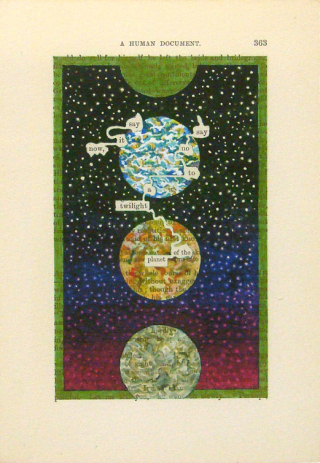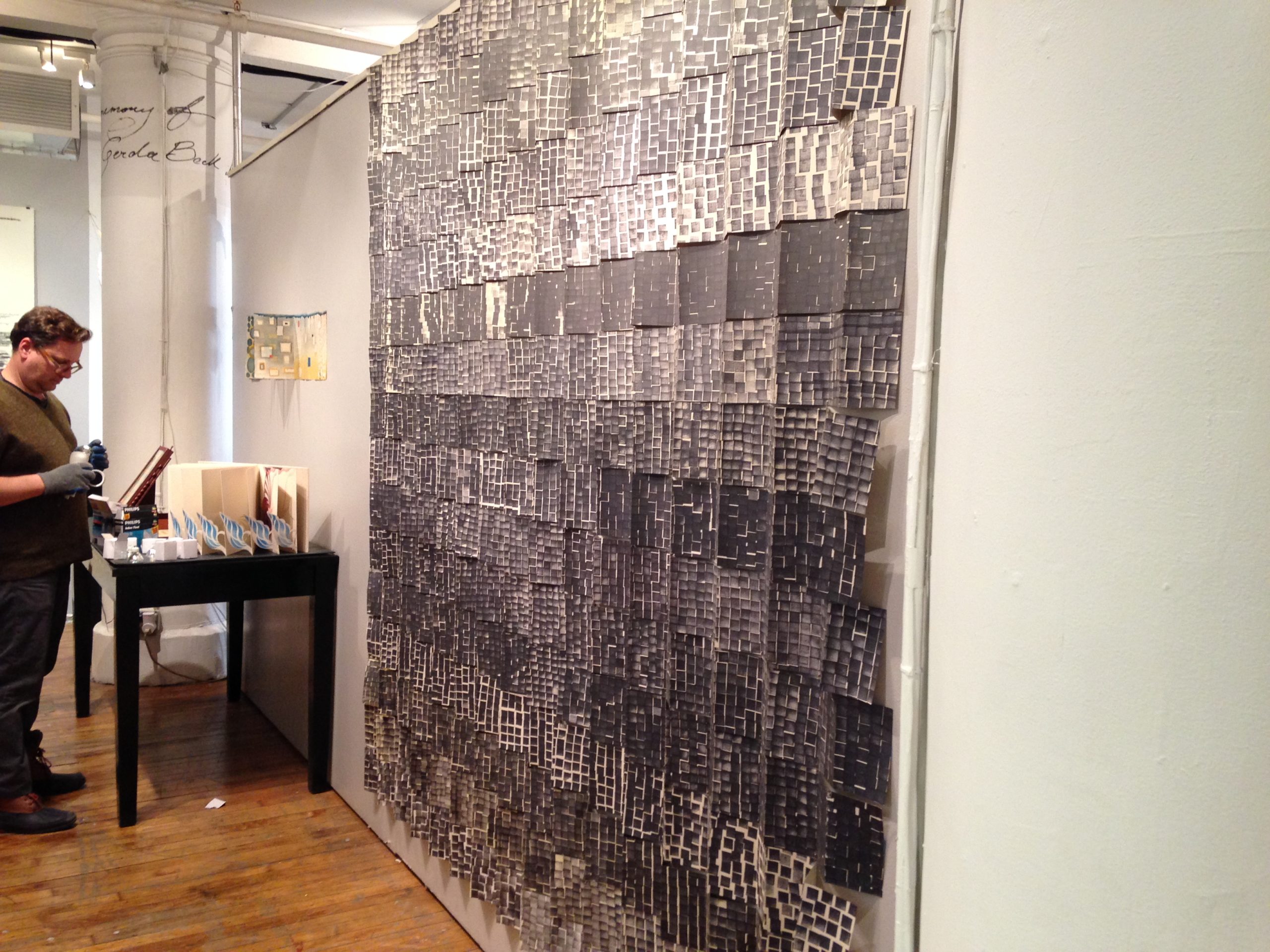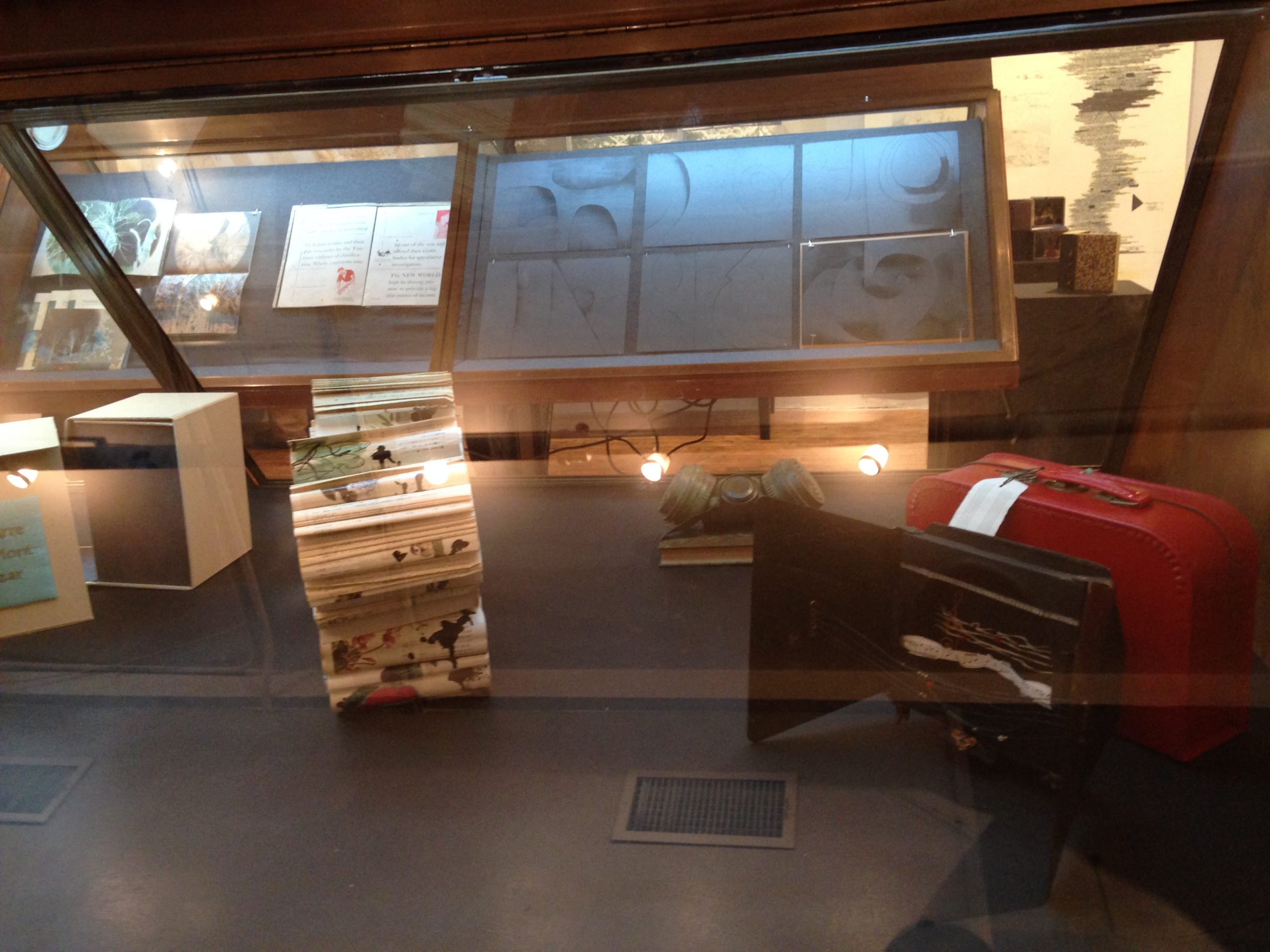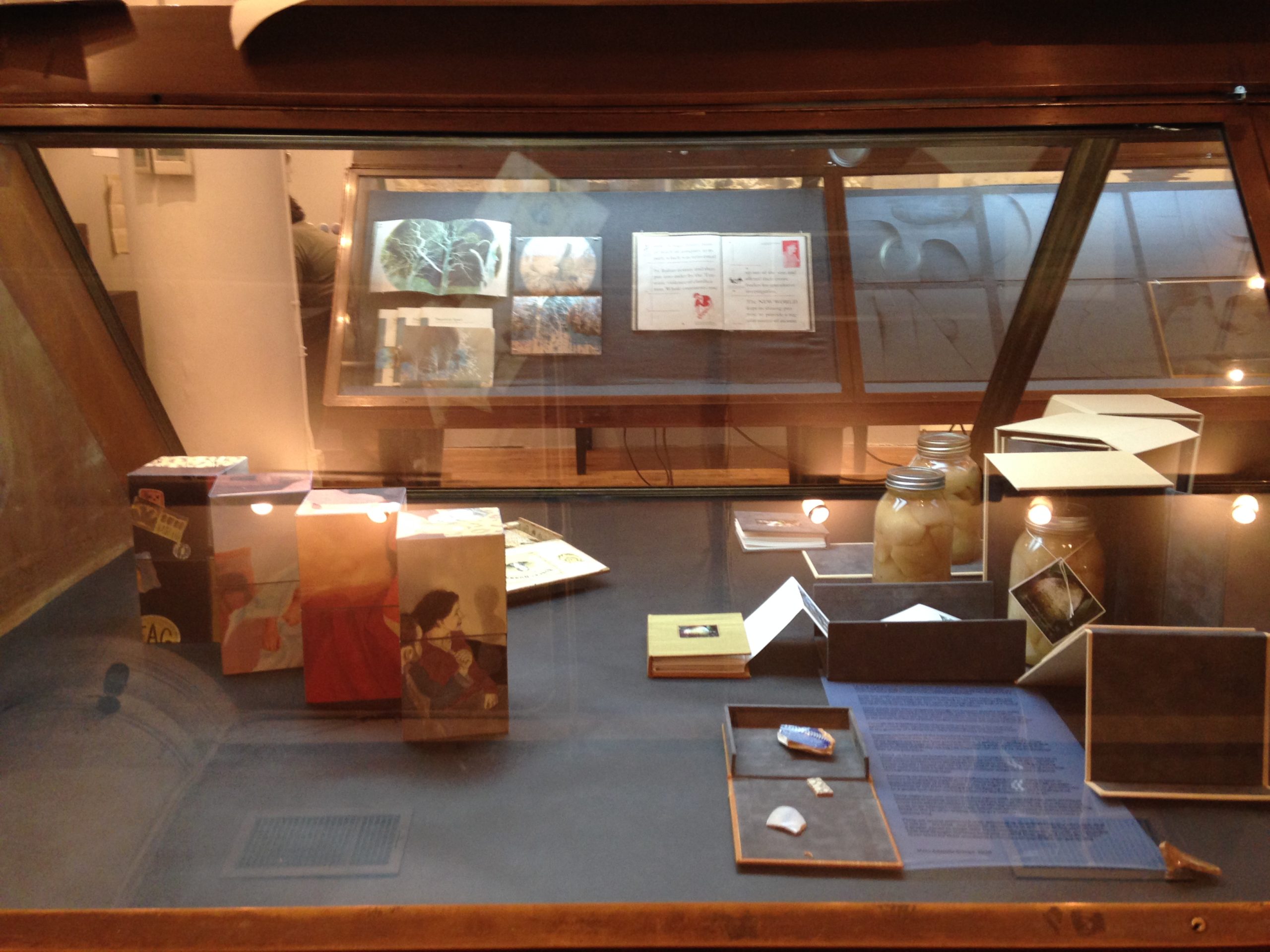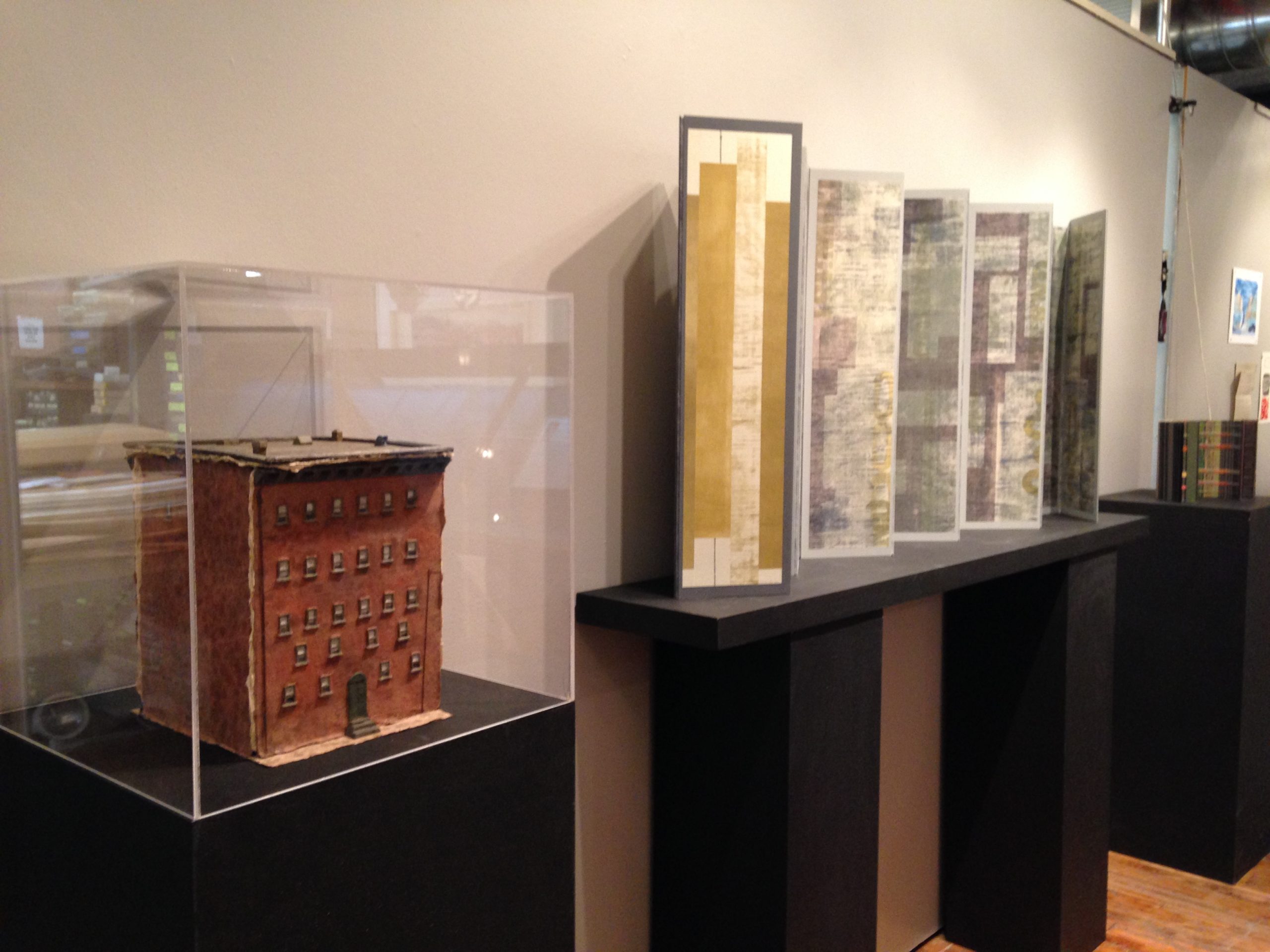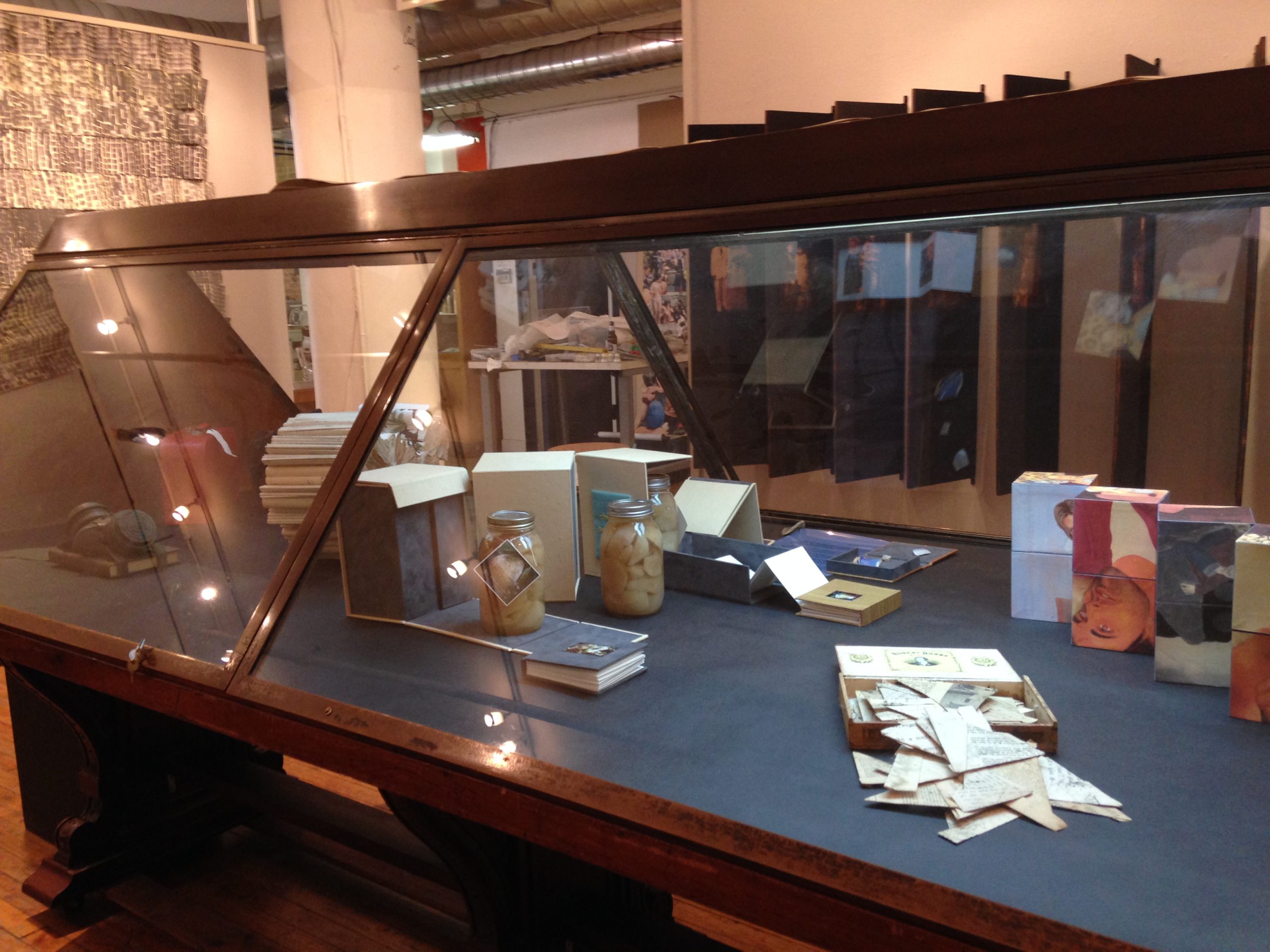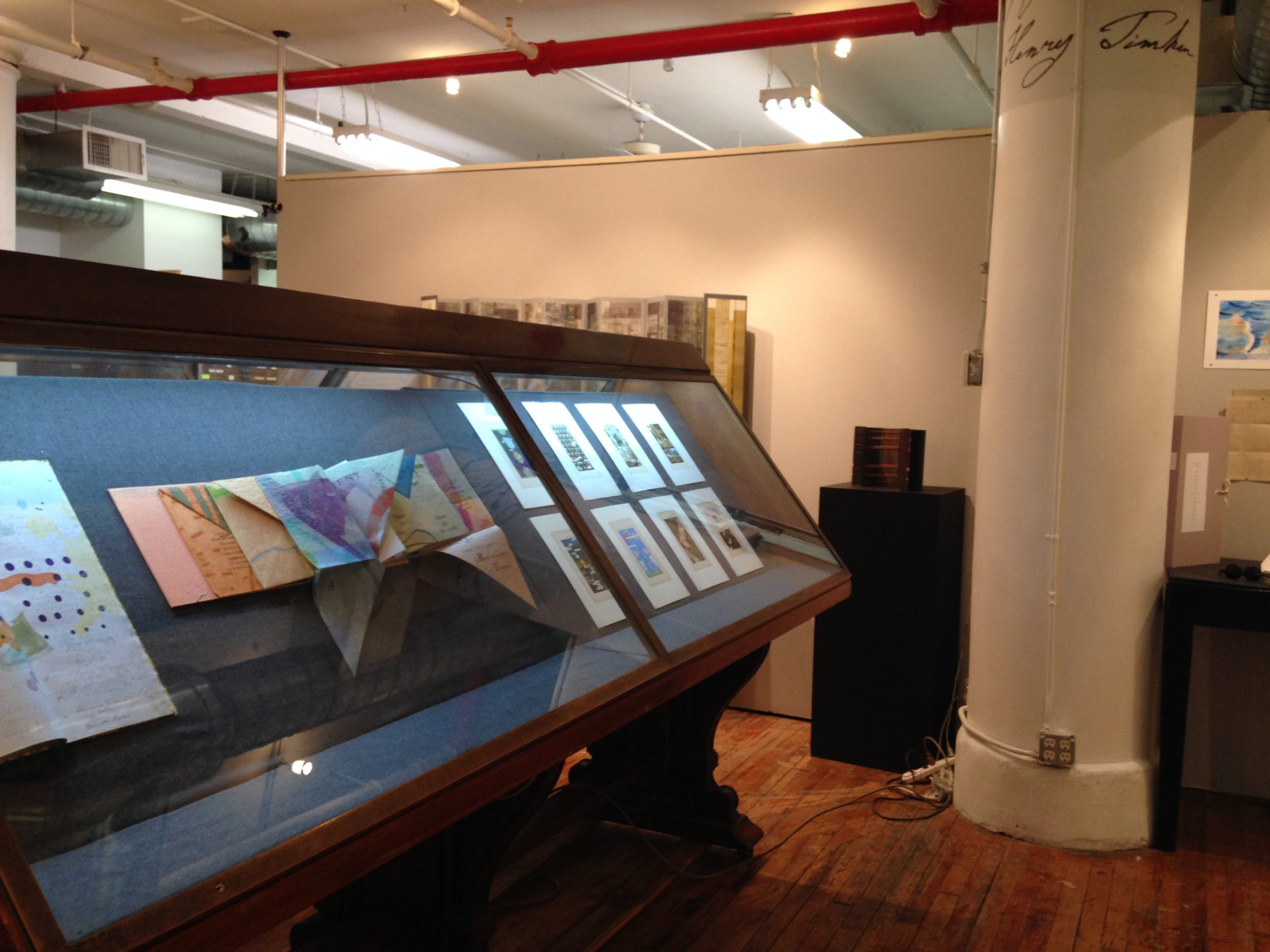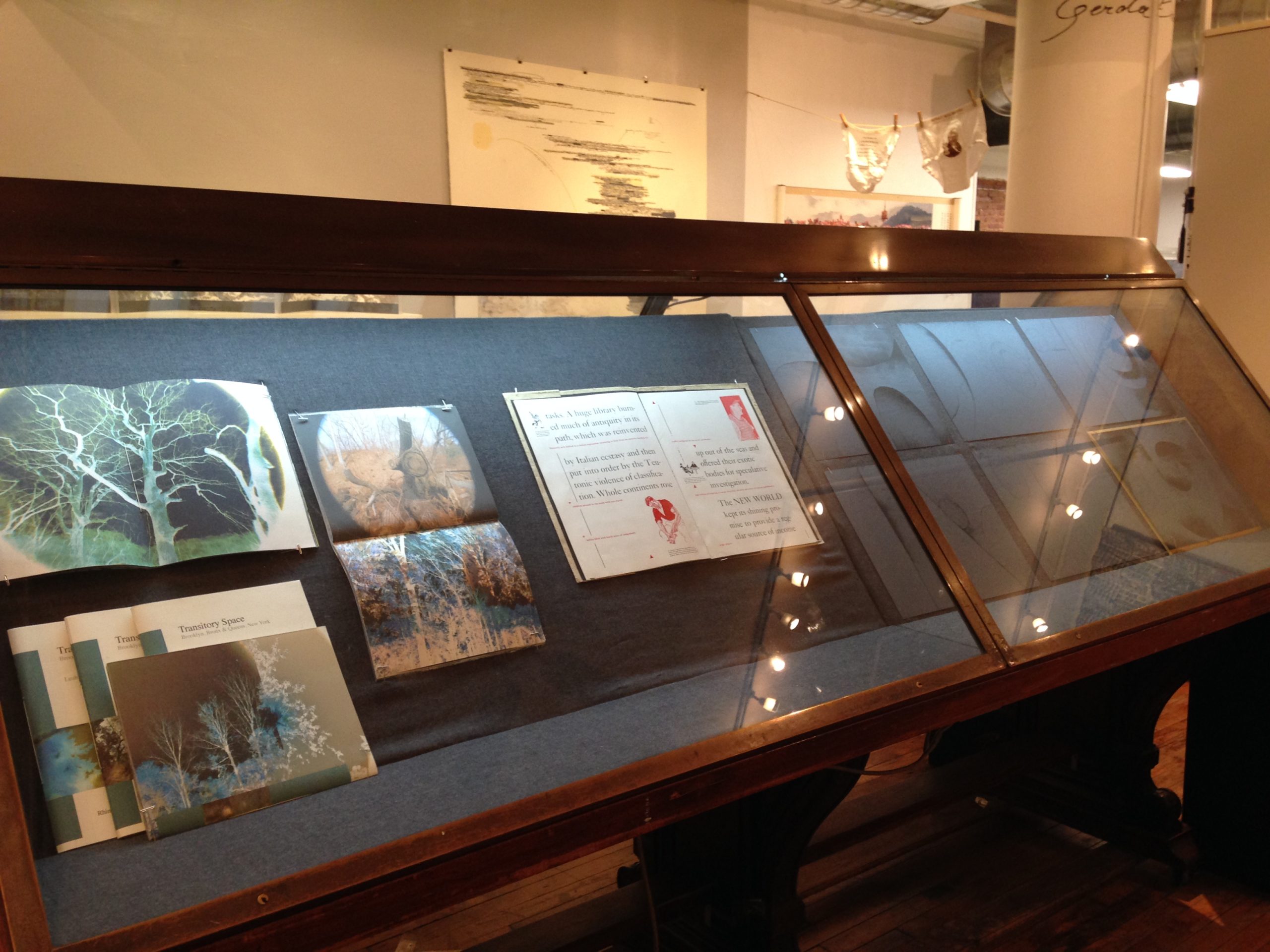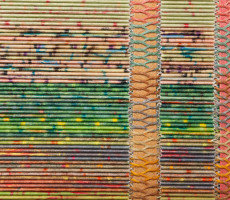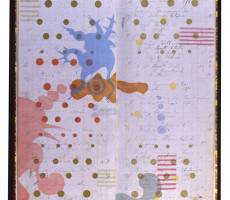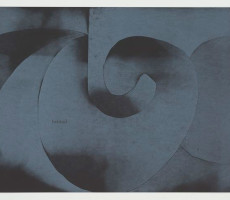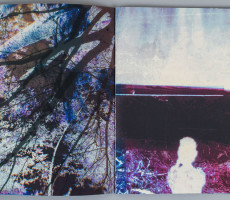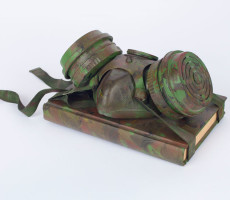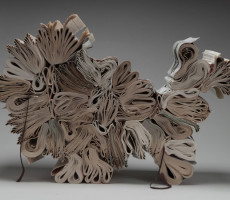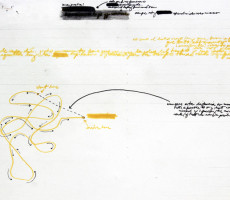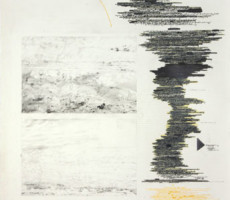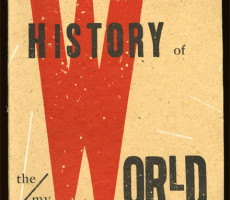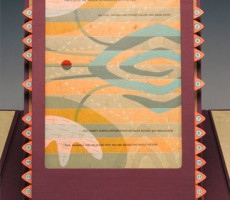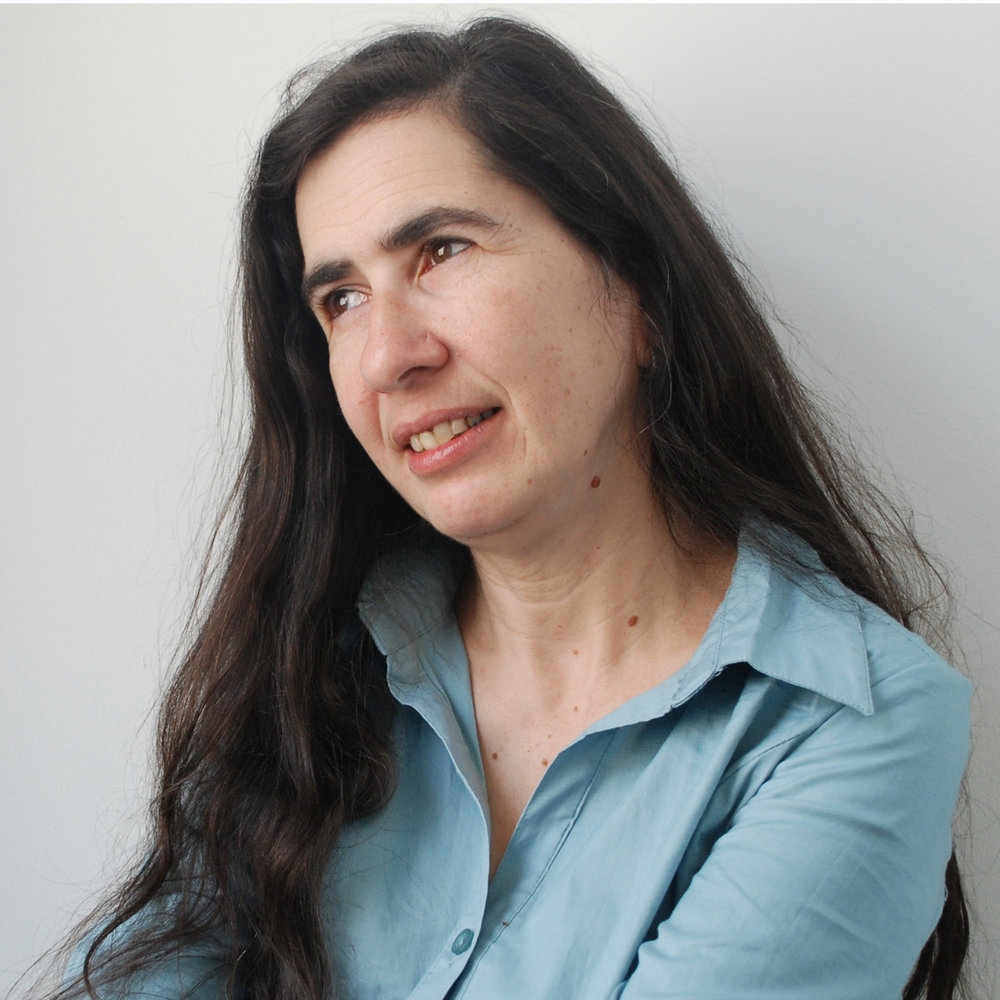Essay by Maddy Rosenberg
The Center for Book Arts’ Featured Artist Project program showcases the work of individual artists by offering an exhibition or installation of a cohesive or recent body of work. For Redux, an exhibition in celebration of the Center’s 40th anniversary, I selected twenty-eight artists who have had a Featured Artist Project over the years. Included are works that continue the dialogue of each artist’s past presentation with an insight into the progression of the work originally exhibited, a reach backwards and a hand forward.
When I scanned the list of the many interesting artists through the years who have had Featured Artist Project exhibitions at the Center, I was searching for representatives of more than just the best examples in the field. I was seeking those taking the book as a jumping off point in as many directions as possible: encompassing, bottled, sitting atop, sometimes even skirting the fact. All of these artists engage the book as object, whether it be as a stack of printed paper, the remolding of its elements, or a visual linking of discrete elements to form a whole.
In Family Album, Tomie Arai leads us on a journey, panel by panel, assembling the characters from her family’s past as if a timeline through the ages. We are engulfed in her invitation, through this environment of Japanese ancestors on hinged wooden panels. We become acquainted with individuals of a private past, much like the experience of combing through a photo-album, that resonates for all.
Steven Daiber collects the pages of the books of his naturalist mother, folded, and tucked away in its own box. Both a printmaker and a sculptor, Daiber blurs the lines of the two, old text appears in new variations, his history becomes more than a personal one as well, reaching into nature’s history on earth through a family one.
Benjamin D. Rinehart explores his own life story and those around him in the politics of the personal. His paintings line the sides of cubes that comprise Fragmented Relationships, morphing into multiple configurations, so that we can take a glimpse at a time of people in his life.
Johanna Drucker brings us into her world, an autobiography that tells a tale of herself, and beyond herself, of women and women’s place in the world, a herstory couched in terms in what interests her most, typography in a graphic tale.
Tom Phillips alters pages with collages that create their own histories. His magnum opus Humument began with a found book and who would have thought where it would lead him years later as the pages mount. It is his aim where his alterations and revisions would result not only in one re-imagined book but an entire series and though the task he sets himself is interesting conceptually, each page has become a visual treat on their own.
With Julie Chen, almost every work of hers becomes a game, the interactions force us to participate in when and how we view the book, sometimes even in what directions. Meaning seems to fluctuate as True to Life beckons us to play with the various combinations of words and images. The narrative keeps changing on us, the context bringing for the new meanings. Chen thinks of it as the working of memory, but it is also as we live life.
Hedi Kyle plays as well, as the book opens and we ride the waves. Kyle, an inventor of book structures, with Listen to the Sound, urges us into the contemplation of the sea. Though deceptively we see it at first glance as more a conventionally bound codex book, it expands into a sculptural world that asks us to peak between the crests of waves and search for the sources of an aural experience through image.
Music was part of Susan Rotolo’s life since her youth, therefore no surprise that there often was a musical aspect to her artist’s books. It was not unusual for her to incorporate objects that resonate with a musical text interspersed with images of the instruments themselves. Here we literally carry the music with us, a sculptural book that becomes easily portable packed away in its own suitcase, or another that fits in the palm of our hand. Either way, we come to play.
Anne Gilman draws in, redacts, draws some more, but she more then hides the words underneath, she forces our attention on those we see. We scrutinize and begin to wonder if there is sense to the words we are seeing, just as with memory, we clutch at the fleeting snippets to draw some broader meaning, seeking the relationship between images and text and realizing they are all part of one whole, neither existing without the other. We feel the process, the gesture of the private activity of building layer upon layer.
Barbara Tetenbaum uses notation of another kind, a ledger book overlaid with dots and lines and amorphous shapes that do their own dance above the calligraphy of the entries. The thin lines and curves of the ledger and its entries may at first glance seem removed from the bold flat shapes but they exist in a delicately balanced counterpoint.
With Synesthesia, a collaboration melding the typographic text of Terrence Mckenna with the painted and drawn geometry of Timothy C. Ely, we feel the color as he does. The mark-making is very deliberate as is the color choice, to evoke becomes the point.
The pages of a bound text sits within a dark girdle in Cynthia Thompson ‘s work echoing a medieval European past steeped deep in Catholic ritual in both form and content. Ghostly figures haunt the book both released and trapped within the metal clasps.
Though working on a two-dimensional plane, Sarah Plimpton uses her skills as both a poet and a printmaker to lead us page by page through this visually minimal portfolio, always maintaining the elegance of the sparseness of the words and images. The blacks and grays play around the edges of the curves just enough to define them while maintaining the same mystery as the text.
To say the work of Diane Samuels is minimal is to state the obvious. A book slowly builds with each silken page slightly touched and broken through. A surface needs a closer look as it hangs off the wall, to see beyond the texture into its symbolism.
Delicate configurations of Karen Kunc’s muted signature geometric woodcut forms sink into the alternating pages in Ephemera, which may inform our experience, but the piece solidly insists that it is here to stay. The text of Robert Pinsky becomes geometric cubes nestled among other shapes, truly adding another dimension as they float along the surface.
Lynne Avadenka’s work may first strike us as a play with form in pure abstraction. But the work seems to be about what is missing as well as what is there. An oversized accordion book becomes a screen, with letterpress combined with the typewritten and shapes printed in relief.
Harvey Tulcensky creates a lyrical wall of sketchbooks that becomes a visual texture. Each individual book, opened to reveal a page spread of small marks with minor variations, may seem at first monotonous with its simplicity and repetition, but we become aware of the subtlety of the work when the sketchbooks work together in their dance across the wall. The small variations of each sketchbook opened to its full accordion length have a visual theme of its own, incrementally changed from book to book, yet obvious when lined up atop each other.
Susan Joy Share weaves a malleable book of lines and color fields in Above the Tree Line. A piece that can easily conform around any object, one we are tempted to wrap around us. It confronts us initially appearing as a flat mat, yet the more we look and the more we play, it is a piece that bends to our needs.
Jacqueline Rush Lee pushes and prods, squeezes and squashes the meat of books to form unreadable objects that beckon us to see the series of books as mere materials and textures for a larger purpose. Living in Hawaii, it is not a surprise that in this series she tackles Asian texts as pieces of the books roll into visibility.
Guy Laramée does the opposite, he carves and gouges to find the object within, a small mountain emerges where there once was a rectangular codex. Altering the book into sandblasted landscapes, we learn to read the book very differently, all at once, an object that exposes its pages in a transformation from container to object.
Claire van Vliet’s Mantle Book says what she means it to be, a landscape reduced to monochromatic tones, undulating back and forth in space as it perches atop a mantle. As we gaze up at the accordion folded pages, we can change a view from page to page or side to side, a hint of what we could perhaps be seeing outside our window – if we happened to live on a rocky coastline.
In this series of pamphlets, the landscapes of Leah Oates are photographic snapshots with juxtapositions that keep us fixed on a moment in time. Oates captures those Transitory Spaces with layers of transparency; we remain in a no-man’s land, unaware of what time and space we truly see. The page is the thing, the book hovers in a world between a mere method of collecting the images and bringing the book into the world of the artist’s book.
SP Weather Station is a distinctive collaborative project through the years, a portfolio of diverse objects from selected artists whose components may speak to us individually but whose sum is its purpose, in telling the tale of a spot and its weather through the months and varying ways of keeping track.
We see the architect in Kumi Korf, whether it be the obvious in the unlivable structure of her book works or the carefully constructed pages that pull out to reveal but never unravel. With Korf the form becomes so completely integrated with concept, equally at home with the delicacy of the papers she uses as well as the firmness of the dense elements.
Rocco Scary literally builds a book page by page, handmade and carefully stacked and couched within the shell of a house built and un-built. Complete with a dollhouse size fire escape, the miniature apartment house throws a nod to Red Grooms into the mix with its urban uncanniness.
The pamphlets included in the housed jars of Mara Adamitz Scrupe may at first seem to us to be the “book” component to the piece, but they stand as a corollary to the main objects before us. Without them, the impetus is lost, though the temptation remains to eat these books with more than our eyes.
Through the long years of collaborating, Nora Ligorano and Marshall Reese manages to give us a good laugh while we contemplate the seriousness of our political situation. Boldly unafraid of taking a stand, they ask us to literally sit on the images of their discontent in a Contract with America that is worth the cloth it is printed on. A product that takes a swipe at a government invariably linked with the excesses of consumerism, an action that may be viewed but one we are invited to participate in.
The politics of Richard Minsky are also portrayed through the power of the book. Chemistry in Warfare may be one his more compact statements, but it leaves nothing more to say, a true punctuation of a philosophy, a gas mask “bound” to a book in full camouflage. Minsky has spent a lifetime bringing the book into the sphere of art and politics, inside and out. It is only fitting that as the founder of The Center for Book Arts, he rounds out this artistic vision.
Of course this is not a comprehensive survey–it is impossible to exhibit all the deserving artists over a 40-year period–but merely a sampling of highlights of this wonderful opportunity the Center for Book Arts affords artists who work with the book as art.
